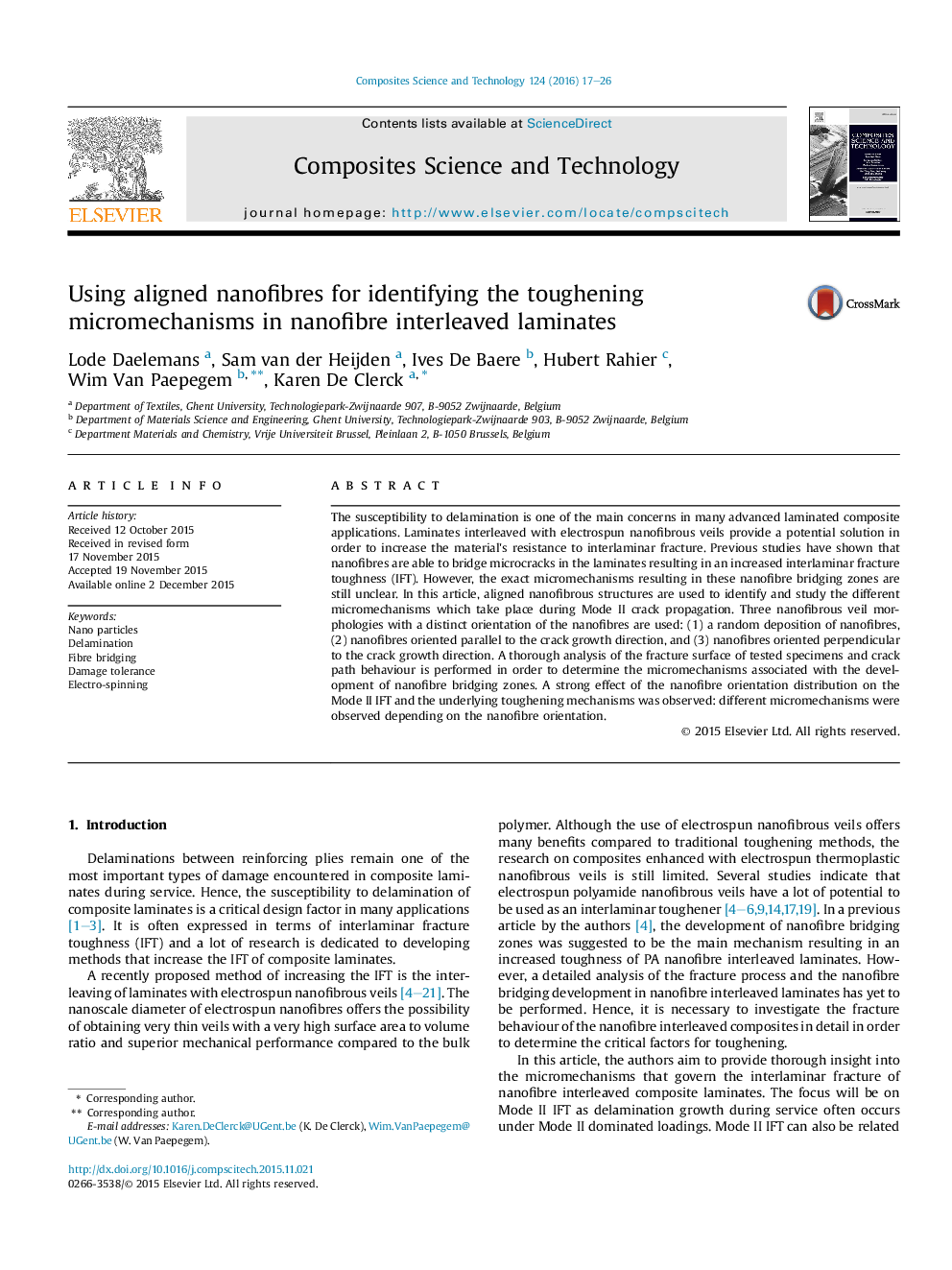| Article ID | Journal | Published Year | Pages | File Type |
|---|---|---|---|---|
| 820020 | Composites Science and Technology | 2016 | 10 Pages |
The susceptibility to delamination is one of the main concerns in many advanced laminated composite applications. Laminates interleaved with electrospun nanofibrous veils provide a potential solution in order to increase the material's resistance to interlaminar fracture. Previous studies have shown that nanofibres are able to bridge microcracks in the laminates resulting in an increased interlaminar fracture toughness (IFT). However, the exact micromechanisms resulting in these nanofibre bridging zones are still unclear. In this article, aligned nanofibrous structures are used to identify and study the different micromechanisms which take place during Mode II crack propagation. Three nanofibrous veil morphologies with a distinct orientation of the nanofibres are used: (1) a random deposition of nanofibres, (2) nanofibres oriented parallel to the crack growth direction, and (3) nanofibres oriented perpendicular to the crack growth direction. A thorough analysis of the fracture surface of tested specimens and crack path behaviour is performed in order to determine the micromechanisms associated with the development of nanofibre bridging zones. A strong effect of the nanofibre orientation distribution on the Mode II IFT and the underlying toughening mechanisms was observed: different micromechanisms were observed depending on the nanofibre orientation.
